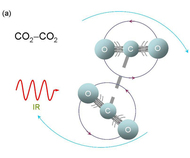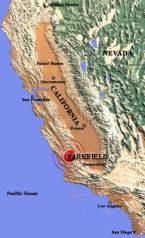Cabbage Leaves and Temporal Fractals
 Friday, May 16, 2008
Friday, May 16, 2008 
Fractal tumor on Wild Cabbage LeafI have always considered fractals in time to be related to self-similar music (such as a nested fugue), or just a plain-old self-similar time-series, such as stock market fluctuations, or the corn price fluctuations at the Chicago Mercantile Exchange, whose fractal nature was first noted by Mandelbrot.
Now there's a different way to consider time-fractals - proposed by Carlos Escudero and colleagues of the Institute for Mathematics and Fundamental Physics in Madrid, in their Dynamic Scaling of Non-Euclidean Interfaces
Escudero "performs calculations of the dynamic scaling (how a surface changes in space and over time at several different scales) of growing structures, such as the kind of semiconductor films used in the microchip industry where, even under the most carefully controlled of conditions, rough (non-Euclidean) geometries can exist. He found that the moment-by-moment behavior of the surfaces are strongly effected by the fractal geometry."











